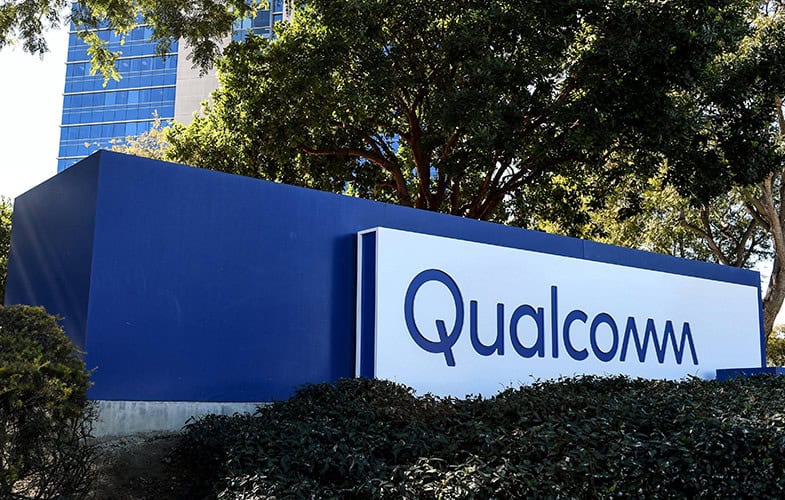Qualcomm
Qualcomm (NASDAQ:QCOM) has long dominated the mobile chip market, but its latest push into artificial intelligence (AI) hardware raises questions for investors. With the AI boom driving massive gains for leaders like Nvidia (NASDAQ:NVDA) and Advanced Micro Devices (NASDAQ:AMD), Qualcomm’s announcement of two new data center chips aims to carve out a niche.
These chips target AI inference tasks, where trained models process data in real time. Yet as the industry matures, can Qualcomm disrupt the established players or is it arriving too late?
Earlier this week, Qualcomm unveiled its new AI200 and AI250 chips, marking a significant expansion beyond smartphones. The AI200, slated for commercial availability in 2026, focuses on enhanced memory capacity and efficient AI inference. It supports up to 768 gigabytes of memory per rack, surpassing current offerings from competitors, and is designed for liquid-cooled server systems that can scale to 72 chips acting as one unit.
The AI250 follows in 2027, building on this with even more advanced memory architecture for near-memory computing, promising better performance in handling large AI models.
These chips leverage Qualcomm’s Hexagon neural processing units, adapted from mobile tech, to emphasize power efficiency. A full rack consumes about 160 kilowatts, comparable to some Nvidia setups but with claims of lower operating costs.
Qualcomm also offers flexibility by selling chips individually or as complete racks, supporting common AI frameworks like those from TensorFlow or PyTorch. This move comes amid Qualcomm’s diversification efforts, including a major deal with Saudi Arabia’s Humain to deploy 200 megawatts of AI infrastructure starting in 2026.
Qualcomm positions the AI200 and AI250 as cost-effective alternatives to Nvidia and AMD’s dominant GPUs. Nvidia holds over 90% of the AI chip market, excelling in both training and inference with high-performance processors. AMD, as the runner-up, offers competitive GPUs for data centers.
Qualcomm’s chips, however, target inference specifically, where efficiency matters more than raw training power. This could appeal to cloud providers like Amazon (NASDAQ:AMZN), Google, or Microsoft (NASDAQ:MSFT) seeking lower-cost options for running AI applications without the premium pricing of Nvidia’s ecosystem.
Advantages include superior memory handling for complex models and potential savings on electricity and maintenance. Analysts note that as AI deployments scale, hyperscalers are exploring alternatives to avoid over-reliance on Nvidia, which has driven its market cap to $5 trillion. Qualcomm’s mobile heritage gives it an edge in power optimization, potentially reducing data center energy demands — a growing concern amid rising electricity costs.
Yet, direct performance comparisons are limited so far, with Qualcomm emphasizing total cost of ownership over benchmark superiority.
Despite these strengths, Qualcomm faces steep hurdles in a market where Nvidia and AMD have cemented their positions. Nvidia’s CUDA software ecosystem creates high switching costs; developers are deeply invested, making transitions risky and expensive. AMD has gained traction with open-source alternatives, but even it trails Nvidia significantly. Qualcomm enters late, with its chips not arriving until 2026-2027, while the AI infrastructure buildout is already underway, projected to involve $6.7 trillion in data center spending by 2030.
Skeptics argue that without breakthroughs in training capabilities or broader ecosystem support, Qualcomm may struggle to gain meaningful share. Its smartphone business remains stagnant, and past diversification into PCs has shown mixed results against Intel (NASDAQ:INTC) and AMD.
However, the stock surged 20% after the announcement, signaling investor optimism. Partnerships like the Saudi deal could provide early wins, but scaling against entrenched leaders will require flawless execution and rapid adoption.
Qualcomm’s AI200 and AI250 represent a strategic bet on inference efficiency, offering investors exposure to AI growth outside the Nvidia-AMD duopoly. While memory advantages and cost savings could attract cloud operators, the late entry poses risks in a fast-consolidating market.
For growth-oriented portfolios, Qualcomm trades at a forward P/E of around 14, cheaper than Nvidia’s 30, making it appealing if AI diversification succeeds. However, success hinges on ecosystem buy-in and avoiding execution missteps.
If the new chips gain traction, it could validate Qualcomm as an undervalued AI play. Otherwise, it risks remaining a niche contender. The stock is still cheap enough to warrant taking a small position on successfully challenging the industry leaders, but with the field getting more crowded, it’s hard to recommend taking a large position yet.

